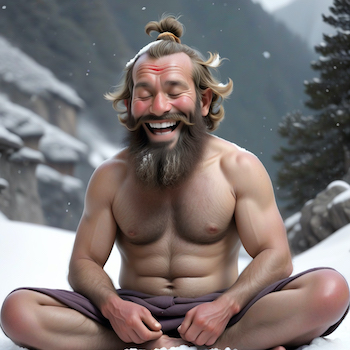
Nisshesha rechaka pranayama and the Haṭha Yoga Pradīpikā
A few years ago I found this video of Dr. Prakash Malshe talking about intermittent hypoxia, from a yogic perspective. The sanskrit term is nisshesha rechaka pranayama which means retention during full exhalation.
I think it’s quite interesting to connect modern physiology with yogic wisdom! Where awareness goes, blood will flow, bringing oxygen and stem cells for bodily healing.
Dr. Malshe quotes a verse from the Haṭha Yoga Pradīpikā, which was written as a condensation of earlier yogic knowledge, in easy to recall mnemonic rhymes to be used as a teaching aid in oral transmission from teacher to student. Most sources cite only four chapters, with the second covering pranayama – but I managed to find the cited fifth chapter here.
I wasn’t able to find much about the history of the text it was sourced from, but apparently this chapter discusses the three doshas (vata, pitta, kapha) in the body in relation to health; namely the resulting diseases that occur when they are disrupted, and methods to alleviate their imbalances.
I’m not an expert in Sanskrit, but mananged to render my own translation of the relevant verses here:
yasmin yasmin yadā deśe rujā bādhā prajāyate
tasmin deśe sthitaṃ vāyuṃ manasā paricintayet ||5.9||
“When sickness or injury arises in the body, bring awareness to sense the wind/energy in this place.”
ekacittena tad dhyātvā pūrayet pūrakeṇa tu
niḥśeṣarecakaṃ kuryād yathāśaktyā prayatnataḥ ||5.10||
“Meditating with single-pointed focus, after filling with air, completely expel the breath and retain the exhale, diligently holding for as long as one is able.”
bahudhā recakaṃ kṛtvā pūrayitvah punaḥ punaḥ
karṣayet prāksthitaṃ vāyuṃ karṇatoyam ivā’mbunā ||5.11||
“Repeatedly filling and emptying, again and again, should cleanse the stagnant wind/energy; similar to how water can be removed from the ear by rinsing [with more water].”
Rinsing water from the ear – what a cool analogy :) Two drops of water join together with surface tension to mobilize more flow.
How to control mixing between two droplets? Tune the interfacial tension to either enhance of suppress surface jets. Beautiful video captured in our labs by @FluidsTom - with thanks to the @royalsociety and @EPSRC @UKFluidsNetwork (with @RafaelCastrejon and @markwilsonleeds) pic.twitter.com/1Z9aA0voiL
— Oxford Fluid Dynamics Lab (@OxfordFluids) February 24, 2020
This would appear to be very similar to the breathwork taught by Wim Hof, which alternates rounds of hyperventilation with breath retention on exhalation. Hyperventilation is not explicitly included in the text, but it is most likely part of the oral transmission.
In yogic terms, this prior “energetic charging” breath to reduce carbon dioxide would be kapalbhati or the more vigorous bhastrika. I have not been personally initiated in an Indian lineage, but AFAIK these techniques are traditionally practiced after preliminary methods like anulom vilom to balance the left and right channels. Daniel Simpson has written quite a good summary of the history of Pranayama.